A small house humbly located in the heart of ancient Hanoi resounds with the deep storytelling voice of an old artist who has turned eighty. Mr. Nguyen Kim Ke (born in 1945), thin, with silver hair, still bright eyes, seems to carry within him all the nostalgia of a golden age of the stage. Few people know that, hidden behind that quiet figure is a life that has never rested, an artist, a soldier, a witness of the times of a traditional art form of Tuong that is gradually being forgotten.
A life choosing a path without glory
We visited artist Nguyen Kim Ke on a bright sunny afternoon in Hanoi. In a small room of just over 10 square meters (No. 50, Dao Duy Tu Street, Hanoi City), the walls were decorated with many Tuong masks. These are the works of his heart that he has painstakingly collected and preserved during his retirement, enjoying a leisurely, peaceful life with the elegant pleasures of old age.
 |
|
He gently introduced us to the masks, each one neatly hung, brightly colored but stained with time. Each mask is a character, a story, a piece of the soul of the stage that he cherishes and values. “Now that I am old and in poor health, I no longer paint Tuong masks like before. Before, I still made and sold many to foreigners, especially before the Covid-19 pandemic. At that time, many foreigners came to Vietnam, and it was easy to communicate, so I could sell. But since Covid, there have been fewer foreign visitors, communication has been limited, so I can't sell as much anymore,” he confided.
Looking at the masks that he carefully preserved, we felt the breath of a brilliant past that he lived in, a past that was completely attached to art. He was born into a family with an artistic tradition, both his father and mother were talented tuong artists, "old trees" of the Lac Viet theater stage (now No. 50, Dao Duy Tu Street, Hanoi City). It was here that the sound of drums and dances were deeply engraved in the young soul of the boy Kim Ke, igniting his passion from the very first steps of his life.
Since childhood, he followed his parents to perform everywhere, growing up in the spotlight, the sound of drums and colorful makeup. At the age of 12, he officially became an actor at Lac Viet Theater, marking the beginning of an artistic journey that lasted more than half a century. However, his artistic life soon changed direction when, at the age of 20, the country entered a fierce war period. Carrying the patriotism of a young man from Hanoi, he volunteered to go to the South to fight. On April 17, 1965, he officially enlisted in the army. Less than three months later, on July 9, 1965, he left for the Southeast battlefield, and was assigned to Regiment 1, Division 9, the main unit of the Liberation Army of South Vietnam.
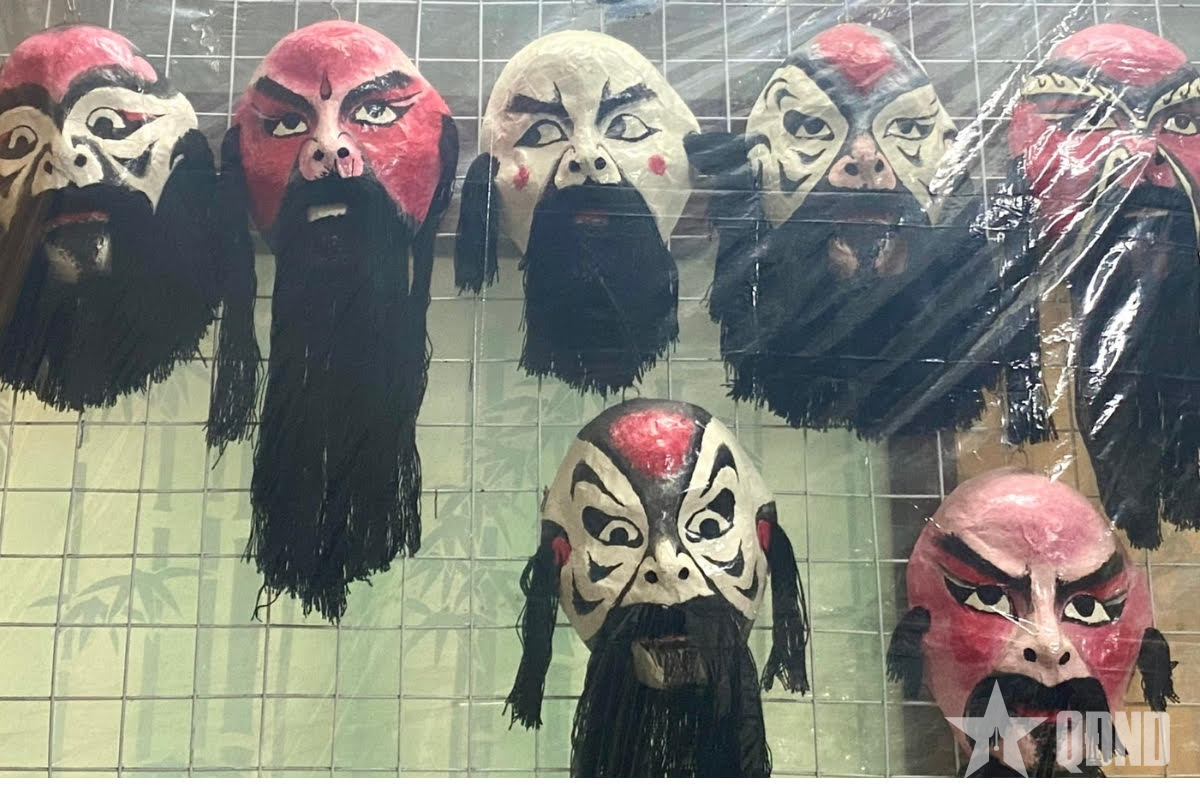 |
During the war years, the former stage artist became a brave soldier amidst bombs and bullets. He participated in many major battles, made achievements, was awarded many medals, and the title "Brave American Destroyer", a title worthy of his bravery on the fiery battlefield. In 1968, he was seriously injured and forced to retreat to the rear. Two years later, he was sent to the North to work at the Long Bien Mechanical Factory. Not only was he a diligent worker, he was also a militia platoon leader, directly participating in commanding the battle against American aircraft during the 12 historic days and nights protecting the sky of Hanoi in 1972.
After the war, when the country was unified, the Vietnam Tuong Theater invited him to return to being an actor. It was as if fate had called him back to the stage lights, where his heart belonged. He worked here until his retirement, without missing a single rehearsal or performance. Over the years of his career, he received countless certificates of merit, awards, and titles of emulation fighters at all levels, but there was still no official title for this veteran artist. He just smiled quietly: "As long as I am not ashamed of myself, that's enough."
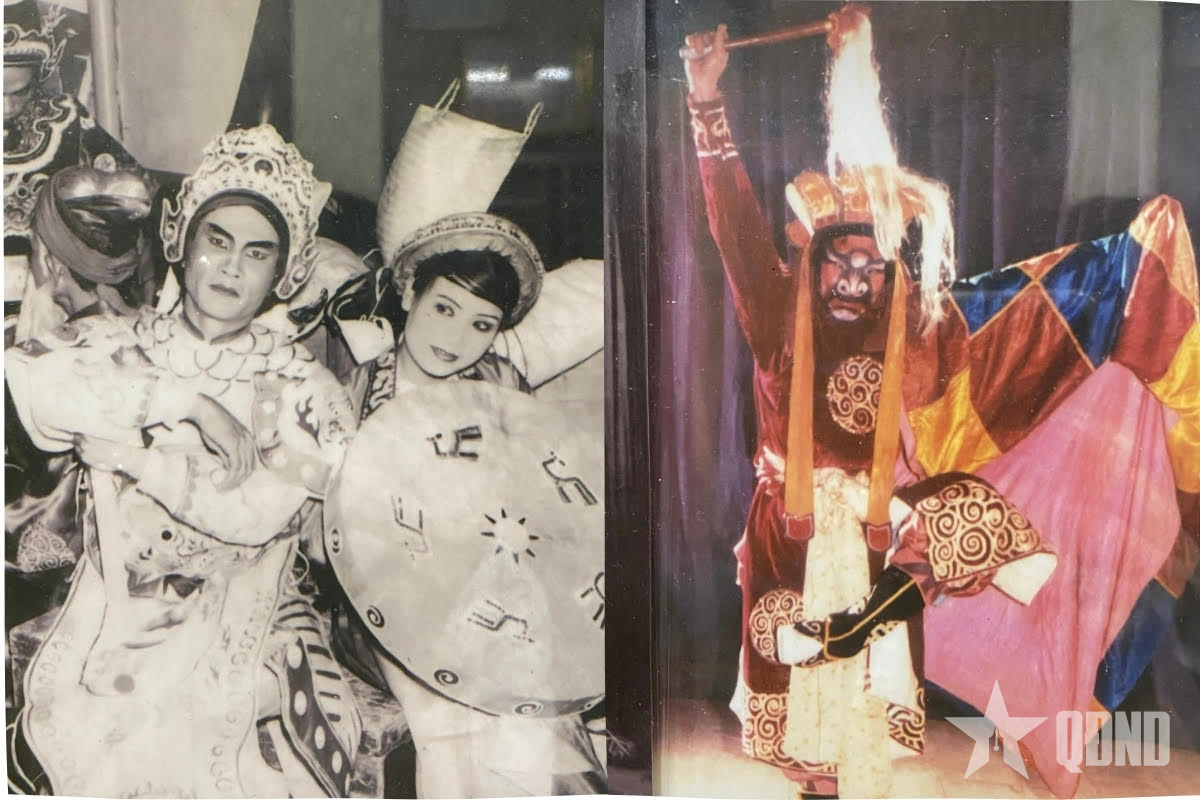 |
That simple saying seemed to sum it all up, a life of dedication without asking for recognition, without needing glory. When he was still on stage, he cherished each role, villainous roles like the Governor To Dinh were portrayed not by technique or dialogue but by demeanor, by the character's inner emotions. "Acting a play is very difficult, you have to practice precisely, you have to practice hard. There are people who want to give up immediately when their heads and foreheads are broken," he said, his voice low as if deep in his professional memories.
Under the stage lights, tuong appears not only as a performing art form, but as a separate world , where the artist completely transforms both soul and body. Artist Nguyen Kim Ke shared that, to step into that world, the actor cannot only have natural talent. They must go through a long journey of hard work, perseverance and passion.
He confided that tuong is not easy for artists, they do not only live by their inner emotions, but must convey those emotions through each body movement, each look, each step, each tumbling move that seems simple but requires technique and endurance. If cheo or cai luong can move people's hearts with just singing and lyrics, tuong requires more than that, it is the harmony between sound and color, between body and soul, between strength and sophistication. Each role is a complete transformation, is sweat, is the result of years of hard work on the practice floor, is the artist's whole life dedicated to each short moment on stage.
 |
During his career, he had many achievements in the army... |
He slowly recalled his youthful days, when each role was a commitment, starting from the sweaty practice floor. For him, the Tuong stage was not a place for improvisation, you could not just step onto the stage and perform. Each role, especially action and martial arts roles, could not be done by just memorizing the lines but had to spend days and hours practicing each martial art move and each acrobatic movement. These were techniques that required high precision, and even the slightest mistake could easily lead to injury.
“In those days, Tuong troupes took training very seriously, because just one wrong step could not only ruin the role, but also endanger the performer himself,” the story, though simple, still left a silent admiration in the listener. Tuong is not for the lazy or impatient. It is the result of a lifetime of hard training, of uncalculated dedication, of passion that goes beyond physical limits.
Sadness of the old play fading away
People know him not only as a talented performer, but also as a teacher without a podium to many generations of actors, film actors, and drama artists. Some of his students have become stars, some now hold key positions in major art troupes. "I have had the opportunity to practice with most of the young artists at the theater today, and to pass on a little of what I have accumulated," he said proudly, his eyes shining with a rare joy.
He told with shining eyes about a special student, Australian artist Eleanor Claphan. He said that not only did she pay for her studies, she also proactively chose Vietnam as her internship destination, within the framework of her study abroad program. All expenses from tuition to living expenses were paid by her own, and most of all, Eleanor went to Mr. Ke's house with a simple but determined wish to learn acting from this experienced artist. "Everything requires perseverance," he said, his eyes distant as if remembering the passionate lessons of his faraway student years ago.
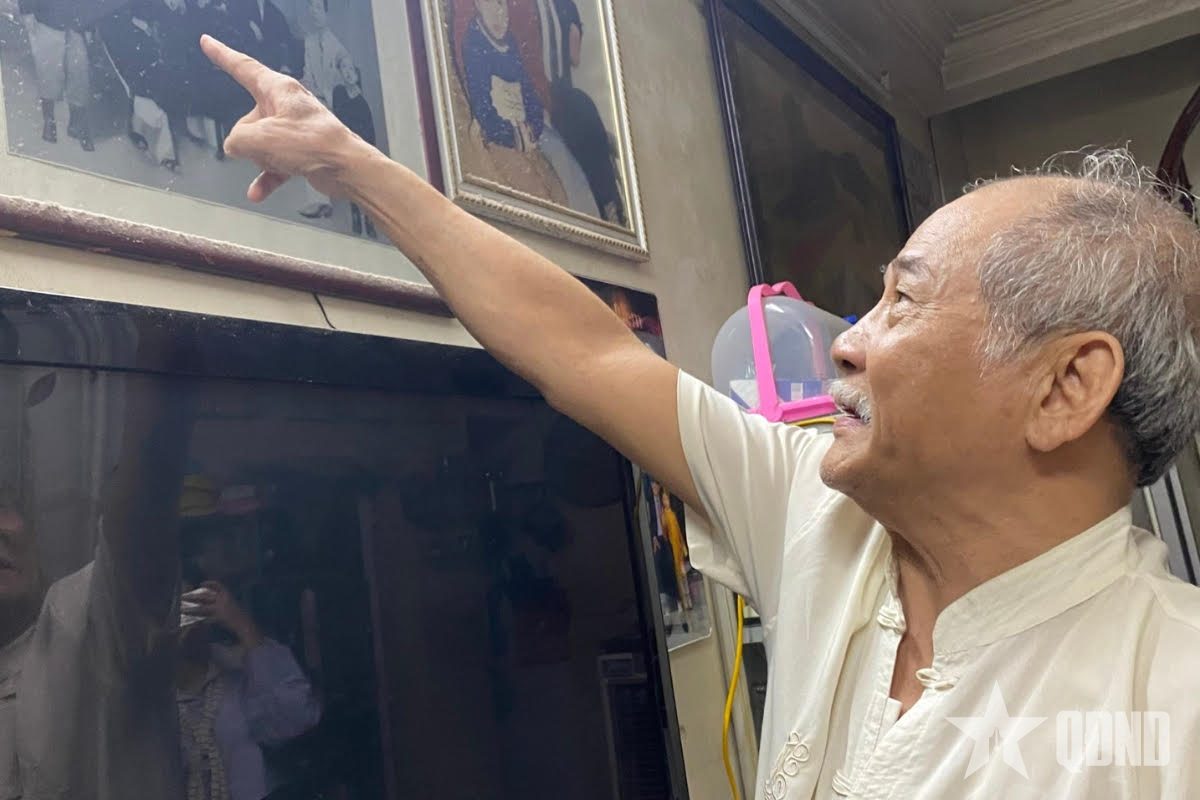 |
Next to the time-worn photos, artist Nguyen Kim Ke introduces his family, the place that has fueled his passion for preserving art. |
However, his eyes quickly turned sad when he mentioned the present, saying: “Nowadays, no one follows Tuong anymore. If you ask them to perform, they will ask if they have money? Who are they performing for?”. These questions were like a knife to the heart of the old artist. Tuong plays that require elaborate dancing, expressive power and a unique style are now considered “traditional dishes that are hard to swallow” in the feast of modern culture.
Even in his own family, the art of Tuong is facing the risk of being forgotten. His family has two sons, one of whom once pursued a singing career but could not stand the constraints of traditional art, the other who was absorbed in making a living, busy with the hustle and bustle of making a living. Neither of them chose to follow the path he had taken. “The eldest son has talent, he has the artistic side of him,” he said slowly, then let out a sigh: “But he said he would not join the troupe, it is very difficult to make a living from Tuong nowadays.”
The memories, the plays, the masks worn over the years are like silent witnesses to his deep love and silent dedication. In a world that is hastily changing, the old artist still silently sows the seeds of traditional art, hoping that one day Tuong will find its rightful place again and be accepted and continued by young souls. Thus, the flame of traditional theater will never be extinguished.
Article and photos: BAO NGOC
Source: https://www.qdnd.vn/phong-su-dieu-tra/phong-su/chuyen-ve-nguoi-giu-lua-san-khau-tuong-truyen-thong-832906


![[Photo] Prime Minister Pham Minh Chinh receives Lao Minister of Labor and Welfare Phosay Sayasone](https://vphoto.vietnam.vn/thumb/1200x675/vietnam/resource/IMAGE/2025/11/11/1762872028311_dsc-2246-jpg.webp)
![[Photo] Chu Noodles - the essence of rice and sunshine](https://vphoto.vietnam.vn/thumb/1200x675/vietnam/resource/IMAGE/2025/11/11/1762846220477_ndo_tl_7-jpg.webp)






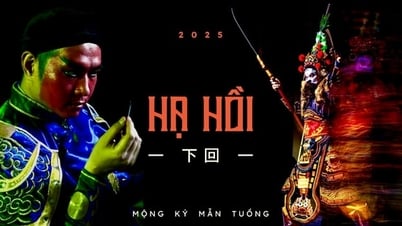



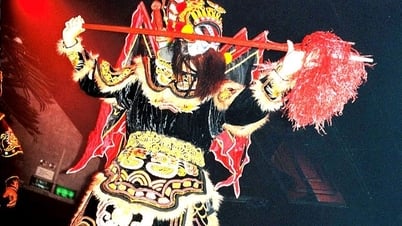
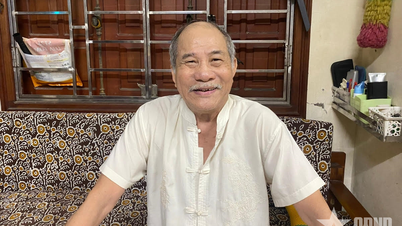

































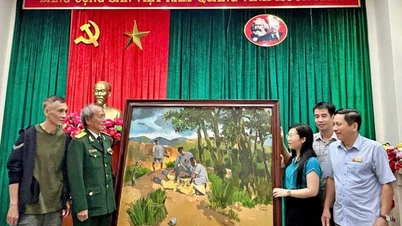

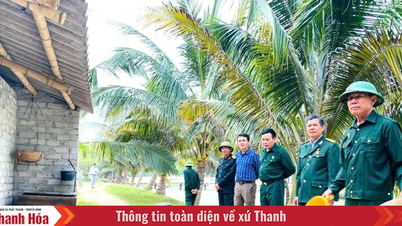














































![Dong Nai OCOP transition: [Article 3] Linking tourism with OCOP product consumption](https://vphoto.vietnam.vn/thumb/402x226/vietnam/resource/IMAGE/2025/11/10/1762739199309_1324-2740-7_n-162543_981.jpeg)








Comment (0)